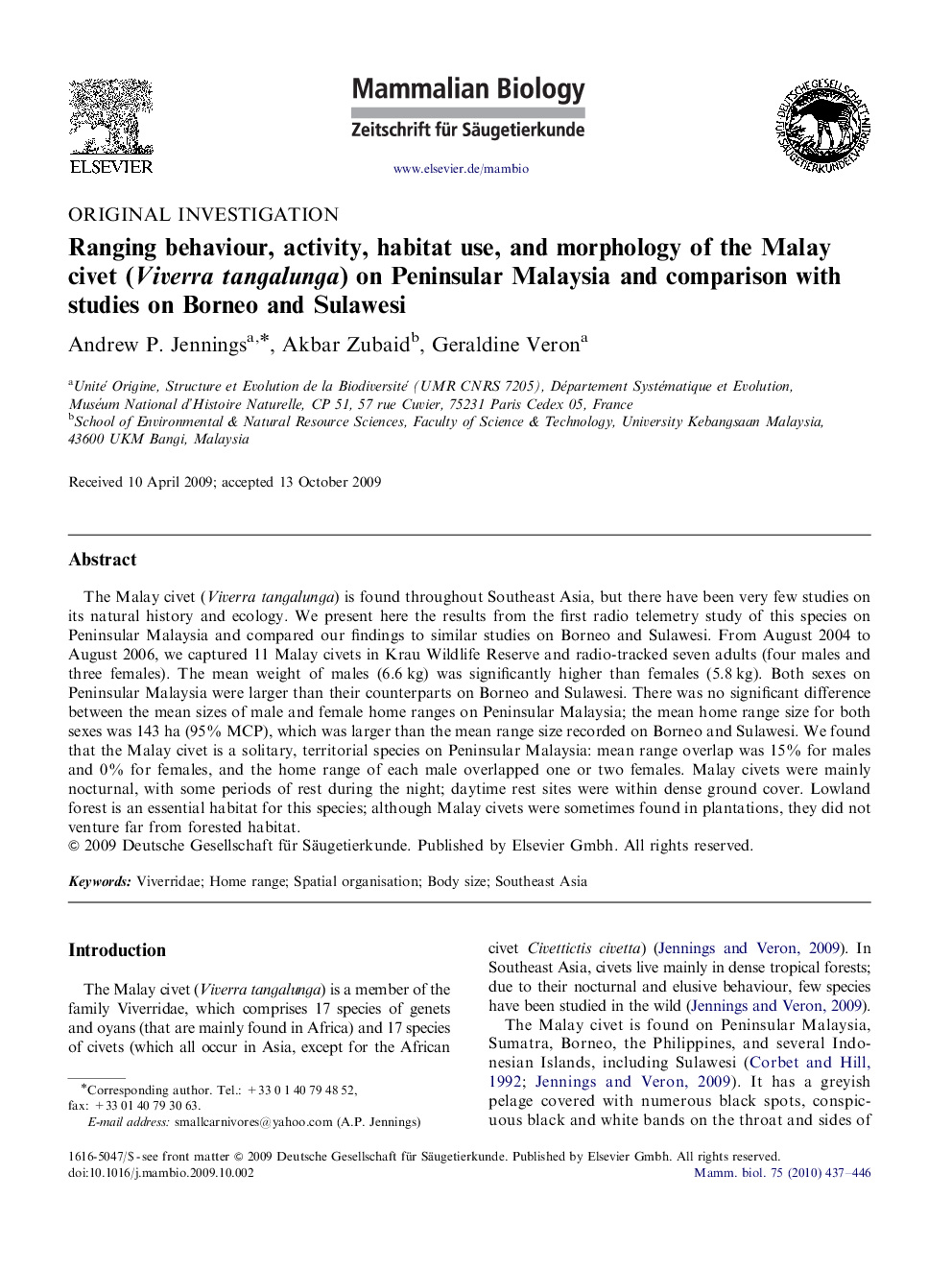| Article ID | Journal | Published Year | Pages | File Type |
|---|---|---|---|---|
| 2194209 | Mammalian Biology - Zeitschrift für Säugetierkunde | 2010 | 10 Pages |
The Malay civet (Viverra tangalunga) is found throughout Southeast Asia, but there have been very few studies on its natural history and ecology. We present here the results from the first radio telemetry study of this species on Peninsular Malaysia and compared our findings to similar studies on Borneo and Sulawesi. From August 2004 to August 2006, we captured 11 Malay civets in Krau Wildlife Reserve and radio-tracked seven adults (four males and three females). The mean weight of males (6.6 kg) was significantly higher than females (5.8 kg). Both sexes on Peninsular Malaysia were larger than their counterparts on Borneo and Sulawesi. There was no significant difference between the mean sizes of male and female home ranges on Peninsular Malaysia; the mean home range size for both sexes was 143 ha (95% MCP), which was larger than the mean range size recorded on Borneo and Sulawesi. We found that the Malay civet is a solitary, territorial species on Peninsular Malaysia: mean range overlap was 15% for males and 0% for females, and the home range of each male overlapped one or two females. Malay civets were mainly nocturnal, with some periods of rest during the night; daytime rest sites were within dense ground cover. Lowland forest is an essential habitat for this species; although Malay civets were sometimes found in plantations, they did not venture far from forested habitat.
